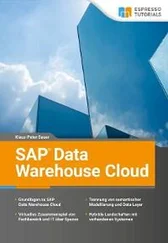essh @ kubernetes-master: ~ / node-cluster $ ./terraform state rm module.nodejs.kubernetes_service.nodejs
Removed module.nodejs.kubernetes_service.nodejs
Successfully removed 1 resource instance (s).
essh @ kubernetes-master: ~ / node-cluster $ ./terraform apply
module.Kubernetes.google_container_cluster.node-ks: Refreshing state … [id = node-ks]
module.Kubernetes.google_container_node_pool.node-ks-pool: Refreshing state … [id = europe-west2-a / node-ks / node-ks-pool]
Apply complete! Resources: 0 added, 0 changed, 0 destroyed.
Terraform Cluster Reliability and Automation
For a general overview of automation, see https://codelabs.developers.google.com/codelabs/cloud-builder-gke-continuous-deploy/index. html # 0. We will dwell in more detail. Now if we run the ./terraform destroy and try to recreate the entire infrastructure from the beginning , we will get errors. Errors are received due to the fact that the order of creation of services is not specified and terraform, by default, sends requests to the API in 10 parallel threads, although this can be changed by specifying or removing the -parallelism = 1 switch during application or removal . As a result, Terraform tries to create Kubernetes services (Deployment and service) on servers (node-pull) that do not yet exist, the same situation when creating a service that requires proxying a Deployment that has not yet been created. By telling Terraform to request the API in a single thread ./terraform apply -parallelism = 1, we reduce possible provider-side restrictions on the frequency of API calls, but we do not solve the problem of lack of order in which entities are created. We will not comment out dependent blocks and gradually uncomment and run ./terraform apply , nor will we run our system piece by piece by specifying specific blocks ./terraform apply -target = module.nodejs.kubernetes_deployment.nodejs . We will indicate in the code the dependencies themselves on the initialization of the variable, the first of which is already defined as external var.endpoint , and the second we will create locally:
locals {
app = kubernetes_deployment.nodejs.metadata.0.labels.app
}
Now we can add dependencies to the code depends_on = [var.endpoint] and depends_on = [kubernetes_deployment .nodejs] .
The service unavailability error may also appear: Error: Get https: //35.197.228.3/API/v1 …: dial tcp 35.197.228.3:443: connect: connection refused , then the connection time has been exceeded, which is 6 minutes by default (3600 seconds), but here you can just try again.
Now let's move on to solving the problem of the reliability of the container, the main process of which we run in the command shell. The first thing we will do is separate the creation of the application from the launch of the container. To do this, you need to transfer the entire process of creating a service into the process of creating an image, which can be tested, and by which you can create a service container. So let's create an image:
essh @ kubernetes-master: ~ / node-cluster $ cat app / server.js
const http = require ('http');
const server = http.createServer (function (request, response) {
response.writeHead (200, {"Content-Type": "text / plain"});
response.end (`Nodejs_cluster is working! My host is $ {process.env.HOSTNAME}`);
});
server.listen (80);
essh @ kubernetes-master: ~ / node-cluster $ cat Dockerfile
FROM node: 12
WORKDIR / usr / src /
ADD ./app / usr / src /
RUN npm install
EXPOSE 3000
ENTRYPOINT ["node", "server.js"]
essh @ kubernetes-master: ~ / node-cluster $ sudo docker image build -t nodejs_cluster.
Sending build context to Docker daemon 257.4MB
Step 1/6: FROM node: 12
––> b074182f4154
Step 2/6: WORKDIR / usr / src /
––> Using cache
––> 06666b54afba
Step 3/6: ADD ./app / usr / src /
––> Using cache
––> 13fa01953b4a
Step 4/6: RUN npm install
––> Using cache
––> dd074632659c
Step 5/6: EXPOSE 3000
––> Using cache
––> ba3b7745b8e3
Step 6/6: ENTRYPOINT ["node", "server.js"]
––> Using cache
––> a957fa7a1efa
Successfully built a957fa7a1efa
Successfully tagged nodejs_cluster: latest
essh @ kubernetes-master: ~ / node-cluster $ sudo docker images | grep nodejs_cluster
nodejs_cluster latest a957fa7a1efa 26 minutes ago 906MB
Now let's put our image in the GCP registry, and not the Docker Hub, because we immediately get a private repository with which our services automatically have access:
essh @ kubernetes-master: ~ / node-cluster $ IMAGE_ID = "nodejs_cluster"
essh @ kubernetes-master: ~ / node-cluster $ sudo docker tag $ IMAGE_ID: latest gcr.io/$PROJECT_ID/$IMAGE_ID:latest
essh @ kubernetes-master: ~ / node-cluster $ sudo docker images | grep nodejs_cluster
nodejs_cluster latest a957fa7a1efa 26 minutes ago 906MB
gcr.io/node-cluster-243923/nodejs_cluster latest a957fa7a1efa 26 minutes ago 906MB
essh @ kubernetes-master: ~ / node-cluster $ gcloud auth configure-docker
gcloud credential helpers already registered correctly.
essh @ kubernetes-master: ~ / node-cluster $ docker push gcr.io/$PROJECT_ID/$IMAGE_ID:latest
The push refers to repository [gcr.io/node-cluster-243923/nodejs_cluster]
194f3d074f36: Pushed
b91e71cc9778: Pushed
640fdb25c9d7: Layer already exists
b0b300677afe: Layer already exists
5667af297e60: Layer already exists
84d0c4b192e8: Layer already exists
a637c551a0da: Layer already exists
2c8d31157b81: Layer already exists
7b76d801397d: Layer already exists
f32868cde90b: Layer already exists
0db06dff9d9a: Layer already exists
latest: digest: sha256: 912938003a93c53b7c8f806cded3f9bffae7b5553b9350c75791ff7acd1dad0b size: 2629
essh @ kubernetes-master: ~ / node-cluster $ gcloud container images list
NAME
gcr.io/node-cluster-243923/nodejs_cluster
Only listing images in gcr.io/node-cluster-243923. Use –repository to list images in other repositories.
Now we can see it in the GCP admin panel: Container Registry -> Images. Let's replace the code of our container with the code with our image. If for production it is necessary to version the launched image in order to avoid their automatic update during system re-creation of PODs, for example, when transferring POD from one node to another when taking a machine with our node for maintenance. For development, it is better to use the latest tag , which will update the service when the image is updated. When you update the service, you need to recreate it, that is, delete and recreate it, since otherwise the terraform will simply update the parameters, and not recreate the container with the new image. Also, if we update the image and mark the service as modified with the command ./terraform taint $ {NAME_SERVICE} , our service will simply be updated, which can be seen with the command ./terraform plan . Therefore, to update, for now, you need to use the commands ./terraform destroy -target = $ {NAME_SERVICE} and ./terraform apply , and the name of the services can be found in ./terraform state list :
essh @ kubernetes-master: ~ / node-cluster $ ./terraform state list
data.google_client_config.default
module.kubernetes.google_container_cluster.node-ks
module.kubernetes.google_container_node_pool.node-ks-pool
module.Nginx.kubernetes_deployment.nodejs
module.Nginx.kubernetes_service.nodejs
essh @ kubernetes-master: ~ / node-cluster $ ./terraform destroy -target = module.nodejs.kubernetes_deployment.nodejs
essh @ kubernetes-master: ~ / node-cluster $ ./terraform apply
Now let's replace the code of our container:
Читать дальше











